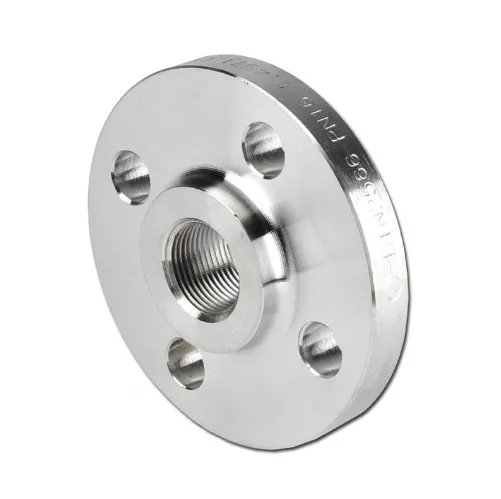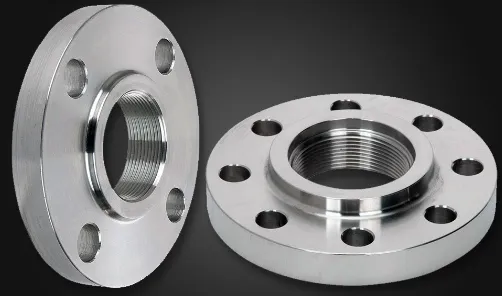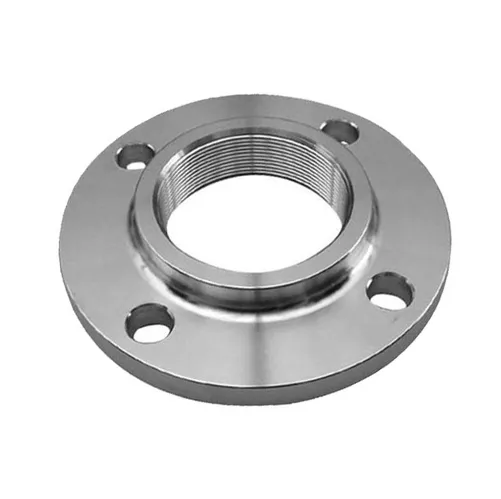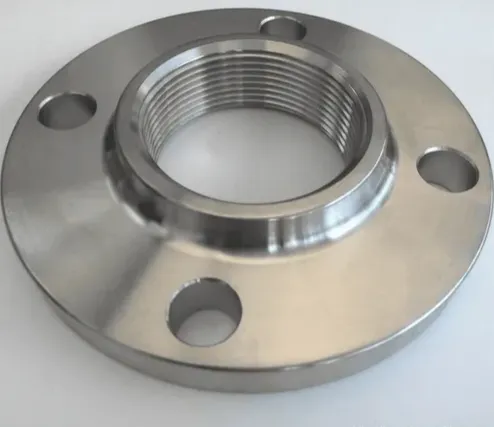General Introduction
Standard Compliance: ANSI B16.5 is a key American standard that deals with pipe flanges, covering aspects like dimensions, tolerances, materials, and pressure-temperature ratings. The threaded NTP flange adheres to this standard, guaranteeing its suitability and interchangeability in a wide range of piping systems across different industries.
Function: It serves as a vital connection component in piping systems. It enables the connection of pipes, valves, and other equipment, facilitating easy installation and disassembly. This is particularly useful in situations where the piping system may need to be modified or maintained regularly.
Design and Structure
Threaded Design: The most distinctive feature is the threaded connection. The flange has internal threads that are designed to match the external threads of the pipe. The National Pipe Thread (NPT) is a standardized thread form used in the United States for pipe connections. This threaded design provides a secure and reliable connection without the need for welding or other complex joining methods.
Dimensions and Specifications
Diameter: Available in a range of sizes according to the ANSI B16.5 standard, typically from small diameters like 1/2 inch to larger ones up to 24 inches or more.
Materials
Common materials for ANSI B16.5 threaded NTP flanges include carbon steel, stainless steel, and alloy steel. Carbon steel flanges, such as those made of A105 material, are cost-effective and offer good strength and durability for general applications. Stainless steel flanges, like 304 or 316 stainless steel, are chosen for their excellent corrosion resistance and are often used in environments where the flange may be exposed to corrosive substances, such as in the chemical and food processing industries.
Pressure-Temperature Ratings
The ANSI B16.5 standard defines specific pressure-temperature ratings for these flanges. For instance, a flange rated for a certain pressure at room temperature may have a different allowable pressure at elevated temperatures. It's crucial to select the appropriate flange with the correct pressure-temperature rating to ensure the safety and reliable operation of the piping system. Threaded flanges generally have lower pressure ratings compared to welded flanges due to the nature of the threaded connection, but they can still handle a wide range of pressures depending on the application.
Applications
Industries: They are widely used in various industries. In the plumbing and HVAC (Heating, Ventilation, and Air Conditioning) systems, they are commonly used for connecting pipes that carry water, air, or other fluids at relatively low pressures. In the oil and gas industry, they may be used in some low-pressure or non-critical sections of the piping system. They are also found in the food and beverage industry, where hygienic and easy-to-maintain connections are required.
Specific Uses: Suitable for applications where the piping system needs to be assembled and disassembled frequently, such as in laboratory setups, mobile equipment, or temporary piping installations. They are also used in some small-scale industrial processes where the pressure and temperature requirements are not extremely high.
-
Cangzhou Yulong Steel Co., Ltd.
-
Phone:
+86 13303177267 -
Email:
admin@ylsteelfittings.com
- English
- Arabic
- Italian
- Spanish
- Portuguese
- German
- kazakh
- Persian
- Greek
- French
- Russian
- Polish
- Thai
- Indonesian
- Vietnamese
- Zulu
- Korean
- Uzbek
- Hindi
- Serbian
- Malay
- Ukrainian
- Gujarati
- Haitian Creole
- hausa
- hawaiian
- Hebrew
- Miao
- Hungarian
- Icelandic
- igbo
- irish
- Japanese
- Javanese
- Kannada
- Khmer
- Rwandese
- Afrikaans
- Albanian
- Amharic
- Armenian
- Azerbaijani
- Basque
- Belarusian
- Bengali
- Bosnian
- Bulgarian
- Catalan
- Cebuano
- China
- China (Taiwan)
- Corsican
- Croatian
- Czech
- Danish
- Esperanto
- Estonian
- Finnish
- Frisian
- Galician
- Georgian
- Kurdish
- Kyrgyz
- Lao
- Latin
- Latvian
- Lithuanian
- Luxembourgish
- Macedonian
- Malgashi
- Malayalam
- Maltese
- Maori
- Marathi
- Mongolian
- Myanmar
- Nepali
- Norwegian
- Norwegian
- Occitan
- Pashto
- Dutch
- Punjabi
- Romanian
- Samoan
- Scottish Gaelic
- Sesotho
- Shona
- Sindhi
- Sinhala
- Slovak
- Slovenian
- Somali
- Sundanese
- Swahili
- Swedish
- Tagalog
- Tajik
- Tamil
- Tatar
- Telugu
- Turkish
- Turkmen
- Urdu
- Uighur
- Welsh
- Bantu
- Yiddish
- Yoruba

Write your message here and send it to us
Related News
-
Jul . 23, 2025Space-Saving Connection Mastery: How 1/2 Pipe Nipple’s 50mm Short Design Solves Dense Piping Installation Challenges?In the labyrinth of industrial machinery, where pipes weave through 200mm-wide gaps and every millimeter counts, the battle against cramped spaces often stalls projects.
-
Jul . 23, 2025Shale Gas Extraction Impact Resistance: How ASME B16.47 Flange's Hub-Thickened Design Passes Seismic Testing?In the high-stakes realm of shale gas extraction, where seismic activity and operational vibrations threaten pipeline integrity, the ASME B16.47 flange emerges as a critical safeguard.

















